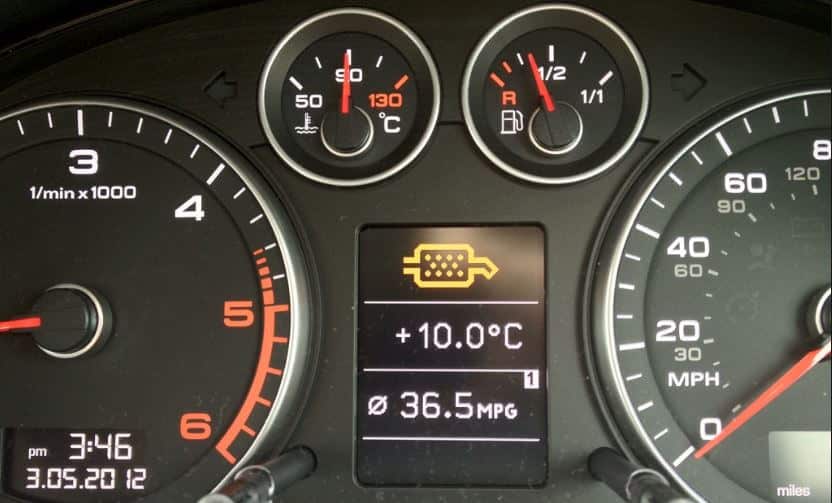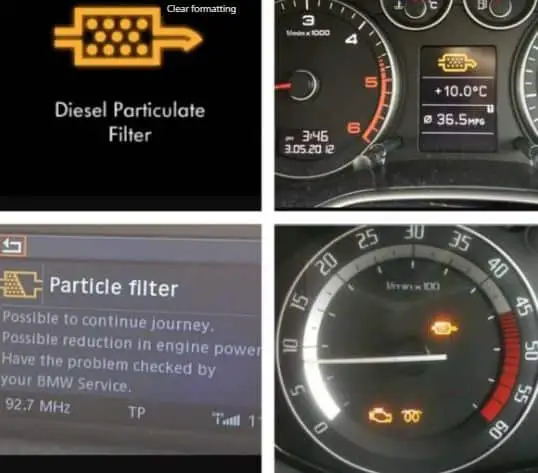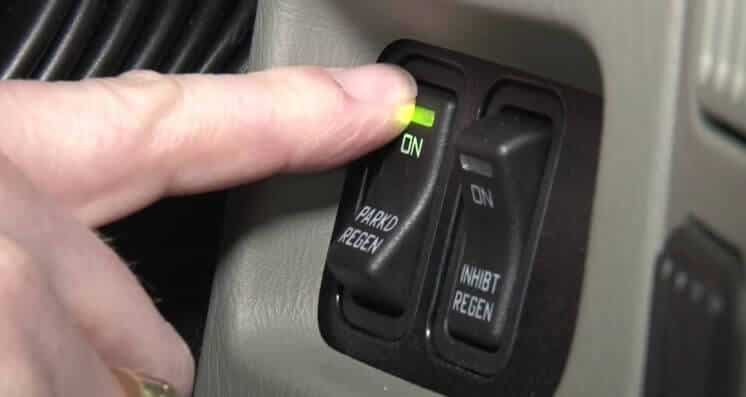
Table of Contents
DPF (Diesel Particulate Filters) are specially designed to filter or trap diesel exhaust particles or soot.
As you can surely imagine, over time the filter will pick up a lot of waste particles and will need to be emptied to maintain performance.
The process by which the DPF is cleaned or emptied is referred to as regeneration. In other words, DPF regeneration is the process of cleanly burning off or removing the excess soot deposited in a DPF filter or clearing a blocked DPF filter.
To regenerate your DPF, the accumulated soot must be burned off at a high temperature (around 600°c), leaving only a residue of ash. This process renews or regenerates the filter. In other words, it clears the blocked filter.
The process of clearing There are three different methods of achieving this, active, passive and forced regeneration.
If you are specifically seeking to regen a Freightliner, please read this article.
How To Clear A Blocked DPF Filter: Regeneration Methods
To clear soot buildup on your vehicle’s DPF filter, the regeneration process can occur in 3 different ways:
i.) Active Regeneration
This regeneration process is suitable for vehicles with low duty cycle. The process is suitable where the exhaust gas temperatures are unsustainable during normal operating conditions.
In this case, you need an auxiliary ECU system to increase the internal temperatures of the exhaust system.

Dpf active regeneration
During the active regeneration process, raw fuel gets injected in the DOC (diesel oxidation catalyst) to create the appropriate DPF regeneration temperatures.
The process doesn’t require the vehicle operator’s input, and there are no engine light codes shown on the dashboard.
ii.) Passive Regeneration
This type of regeneration occurs when the engine load and speed produce temperatures above 350C, burning off trapped soot while the vehicle operates.
Compared to the higher temperature active regeneration, this process uses the normal exhaust temperatures while using nitrogen dioxide as a catalyst for oxidizing the DPF’s particulate matter.

Passive dpf regeneration
The main advantage of the passive regeneration process is its simplicity. It requires fewer components, making it a lightweight and convenient solution.
The process also eliminates downtimes compared to most active systems that put engines out of commission for cleaning and maintenance.
Moreover, passive regeneration is ideal for most working environments, thanks to its ability to eliminate high temperatures.
iii.) Parked or Forced Regenerations
Also known as manual regeneration, this process occurs when your vehicle is stationary, and it needs an action from the vehicle operator, unlike active and passive regeneration processes.
The process illuminates the check engine light on your vehicle’s dashboard mainly after putting it on idle mode for an extended period.

Parked regeneration
During forced regeneration, the vehicle operator needs to set the parking brake to start the parked regeneration.
The engine rpm will then increase while raw fuel is being injected to the exhaust gas towards the engine exit.
That creates the appropriate regeneration temperatures, taking about 30 minutes to complete the process.
DPF Regeneration Benefits
While diesel particulate filters are designed to trap waste particles, unburnable as naturally gets collected over time.
That causes excess backpressure, leading to DPF downtime and failure as well as reduced fuel economy.
The cost of replacing a single DPF can also run to almost $10,000. That means clearing the blocked DPF is the most economical solution. Here are more benefits of cleaning the DPF besides saving you money:
Extend your DPF and engine’s useful life
Research has shown that soot and ash particles can harden in the filter cells at any time.
These waste particles are quite hard to remove when left unchecked to a long period, and it can lead to cracking and several other damages in the engine.
The regeneration process restores your vehicle’s filters to peak performance, also maximizing the general lifespan of your DPF.
Meet EPA and other state requirements
Since 2007, all heavy-duty diesel engines (HDEs) on the road must have DPFs. Original equipment manufacturers advocate for filter regeneration after every 200,000 miles.
Most states also require older on-road diesel engines to clean the DPF at least once every year. That means it will help you pass the emissions testing.
Improve fuel economy and engine efficiency
When the vehicle’s DPFs are clean and functioning fully, the engine works at maximum efficiency.
It also improves fuel economy by minimizing the number of contaminants in the oil. That also cuts down on the visit to the mechanic.
Keep your fleet on the road
To avoid unscheduled downtimes, it’s essential to keep soot and ash away from the DPFs. If left unchecked over a long period, it can result in irreversible damages.
That may often decommission a vehicle from your fleet, resulting in a significant loss in your business.
How Do I Tell If My Diesel Particulate Filter Is Blocked
The most obvious sign of a problem in the filter system is the DPF warning light on your vehicle’s dashboard.
The DPF light can be accompanied by your engine management light, indicating that the situation has already progressed to a serious issue.
That means you’ll need to have your vehicle’s engine diagnosed with a diagnostic scanner.

Clean dpf vs blocked dpf
Here are several other signs that your DPF is blocked and requires regeneration:
- Loss of engine power (limp mode)
- Active and passive regeneration keeps failing
- Increase in oil level
- Pungent diesel smell from the engine
- Failure in the automatic stop-start system
- Increased fuel consumption
- The DPF light illuminates on the dashboard
- Excess amount of smoke while driving
In case both active and passive regeneration fails, you’ll see another light on the dashboard alerting you that you need professional DPF cleaning services.
You can also try forced regeneration, though it might only be a temporary solution if the situation is too advanced.
Diesel Particulate Filter Regeneration Frequency
Ultimately, your vehicle’s DPF will need regeneration due to soot and ash formation on the filter system.
The pressure formed by the soot triggers the regeneration process, allowing your filter system to go through active regeneration in every 300 miles depending on how you’re using your car.
This process takes about 10 minutes to complete.
The regeneration process is pretty straightforward, though it will start being a problem if the journey is too short for the engine to finish it.
Keep in mind that the vehicle requires high temperature over an extended period to complete the DPF regeneration.
You can remedy the situation in various ways if it occurs.
With older diesel engines, you should also clean the DPFs at least once a year even without any signs of a blockage.
You can also clear the filter system as low as every 16 quarts of oil consumption or after every 60,000 miles to ensure your engine is always running efficiently.
DPF Regeneration Cost
While DPF replacement can run to thousands of dollars, regeneration is a convenient way to save money. Depending with your location, you can access clear the system in the local garage through forced regeneration.
The process usually costs about $100, removing excess soot successfully and allowing the DPF to regenerate again through active or passive processes automatically.
Nonetheless, this process isn’t a 100% guaranteed fix.
How Long Does Regeneration Take?
In general, active and parked regeneration can take about 45 minutes or so. However, this depends on the temperature the DPF needs to be built up to for the soot to begin burning off. See more here.
Recap
There you have it, the complete guide to DPF regeneration. DPFs have been fitted to diesel engines for almost 2 decades now.
Yet, many people still drive with blocked DPFs, not knowing that if not maintained, there could be serious consequences for your car.
Do not just rush to delete your DPF if you are experiencing problems with the filter, instead check to see if the filter requires regeneration and follow the process above to properly clean your DPF.
DPF delete should never be the go-to option as DPF’s reduce harmful exhaust emission and helps to prevent black smoke you used to see from diesel vehicles. Remember, this is not just a question of performance and emission reduction, but a question of legality as well.
 by
by